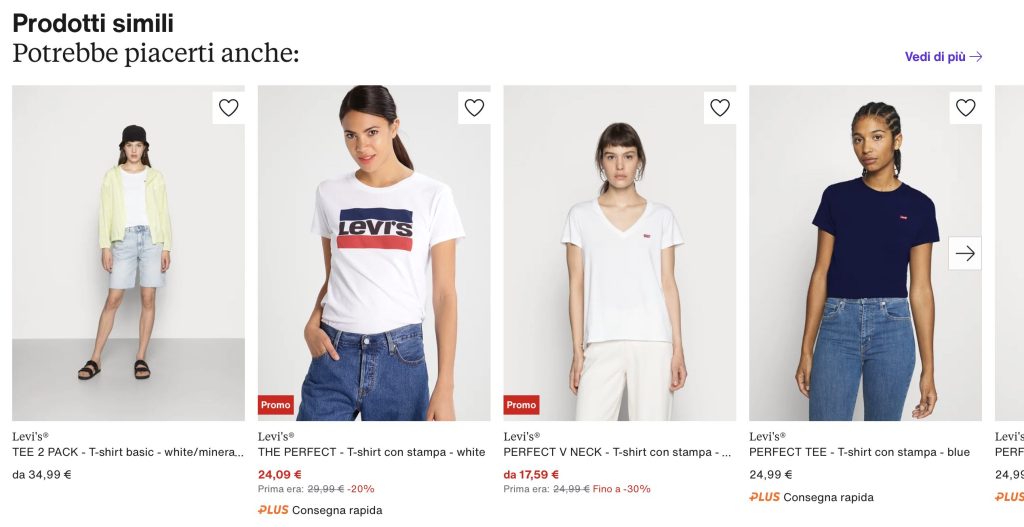There are many opportunities to increase sales even after the purchase. Cross-selling and upselling are the two marketing tactics that deal with this very aspect. Remember that the three main elements that make the customer experience optimal are retention (42%), customer satisfaction (33%) and the possibility of cross-selling and / or upselling (32%). In this guide, we’ll provide insights and valuable tips to help you deliver more value and further promote your business.
What is cross-selling?
Cross-selling is about suggesting and promoting complementary products or services to customers who are already making a purchase. Instead of focusing solely on the core product or service being purchased, cross-selling aims to enhance the customer experience by offering related or supplementary items that can add value or meet additional needs. In summary, “If you like this, you might like this too.” But it’s important to note that cross-selling isn’t about promoting random or unrelated products. On the contrary, the recommended product must be carefully chosen to really add value to the customer’s existing purchase.
Here are some of the most common cross-selling techniques:
Bundled products: offer a discount when customers buy products in bundle.
Suggestive Selling: recommend additional products or services that complement the customer’s purchase.
Loyalty Programs: implement loyalty programs with rewards and bonuses to customers who shop frequently.
Personalized recommendations: leverage customer data to provide personalized recommendations about products or services based on their interests and purchase history.
Follow-up: contact customers after a purchase to recommend related products or services.
What is upselling?
Upselling encourages to consider a more expensive alternative that offers additional features to the customer’s initial choice, with improved quality or greater benefits.
Here are some of the most common up-selling techniques:
Product or service upgrades: give customers the opportunity to upgrade to a more advanced or feature-rich version of a product or service they already use.
Add-ons and Enhancements: offer customers additional features or add-ons to enhance their overall experience.
Tiered Pricing: implement different pricing levels for different features. This allows people to choose a plan that best suits their needs. For example, a subscription to a service may consist of a basic plan with limited features and a premium plan with additional benefits.
Limited-time offers: create a sense of urgency by introducing limited-time offers or promotions to encourage people to upgrade or buy a more expensive version of a product or service. This technique fuels the fear of missing out on something (FOMO) and prompts customers to take immediate action.
Effective cross-selling examples
Let’s discover some effective examples of cross-selling that we come across every day offered by brands we are familiar with.
Apple
When buying an iPhone from Apple, the company usually recommends matching accessories and add-ons to the original product.
This could be the AppleCare insurance and phone accessories such as cases, chargers.

Amazon
Amazon constantly applies cross-selling and up-selling techniques . Each time you add a product to your cart, the site provides recommendations such as “You may also be interested in…” and “Most customers buy these products together” or “Frequently bought together”, grouping similar products and offering the opportunity to add them all to your cart, thus bringing added value to your original purchase.

ASOS and Zalando
ASOS and Zalando offer some of the best examples of cross-selling in the fashion industry. In fact, every time an item is viewed, these brands offer, like Amazon, other items. The suggestion also happens before users add something to their cart. In particular, the “Buy the look” formula is a perfect combination of outfits based on the product that shoppers view, thus incentivizing people to further complete an initial purchase idea.
Zalando


ASOS

IKEA
IKEA leverages the frustration that all people know when it comes to choosing a style of furniture: it provides suggestions on furniture elements to add in a single set, combining them in a coherent way. This solution takes a lot of stress away from buyers and, in addition to making a process much more immediate, it brings useful ideas to people.

Opportunities to upsell and cross-sell your shipping services
Customers are often willing to pay extra for express shipping or for additional delivery options to have more convenience and flexibility. Applying cross-sell and upsell strategies in shipping or delivery services is helpful in meeting different customer needs and improving their overall shopping experience.
For example, offering free shipping for additional items in the cart or shipping discounts when a customer purchases several items together with a specific product is a useful strategy to consider.
Once again, Amazon proves to be an example to take inspiration from. In fact, for certain items, Amazon offers same-day shipping as long as those items exceed a certain price threshold.
This marketing technique encourages customers to purchase additional items and can also improve customer satisfaction, while reducing shipping costs and time. These offers, when studied carefully, can increase the likelihood of repeat purchases.
Personalized packaging: offering personalized packaging options, such as gift wrapping or creative packaging can add a little extra flair and professionalism to your delivery.
Assistance, installation or assembly services: if your services also require installation, product assembly or assistance, offer customers the option to add this service to their shipment. For example, if you are delivering an a TV, offer professional assistance or assembly included.
Additional insurance: give your customers peace of mind by offering them the option to protect their goods in transit with additional insurance. This option will make them feel reassured in case the package is damaged or lost during transit.




